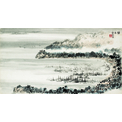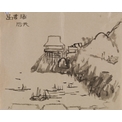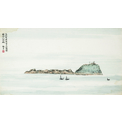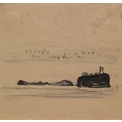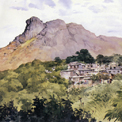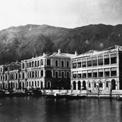 Collections
Collections A Eulogy of Hong Kong Landscape in Painting: The Art of Huang Bore
A Eulogy of Hong Kong Landscape in Painting: The Art of Huang Bore Plates and Sectional Texts
Plates and Sectional Texts Po Toi Islands.Lamma Island
Po Toi Islands.Lamma Island
The Po Toi Islands that lie to the southeast of Hong Kong are famous for the large boulders Sea-shell, Monk and Buddha Hand as well as the legendary rock carvings that were finally discovered in the 1960s. Again, the hikers of Yung Sheh Hiking Club were among the first explorers here. Attracted by the Tai Wan on Po Toi, Huang Bore kept painting the cove and finally succeeded in devising an original composition among the many paintings he made for the island.
The Waglan Island is the easternmost member in the archipelago. The lighthouse first built in 1893 is one of the five that has survived the War, guiding seafarers and collecting meteorological data for our observatory. The peculiar shape of the island in the form of a row of rocks jutting out from the sea is captured most economically by Huang Bore.
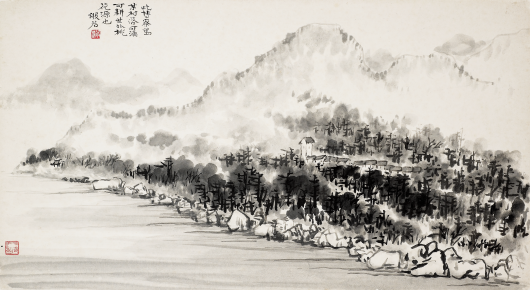
The Lamma Island, known in the old days as Pok Liu, is the third largest island in the territory. Foreign ships heading for the Guangzhou Bay used to call at this southwest island during the Tang and Song periods. In view of its proximity with the Hong Kong Island, it makes a good destination for a one-day trip for the locals. Huang Bore, for one, had a night cruise to Luk Chau in the north together with friends. We can learn from the inscription on a painting that the simple life led by the fishing community here fascinated the painter so much that he regarded it a paradise on earth where the traditional literati ideals of fishing and farming for a living could be realized.
